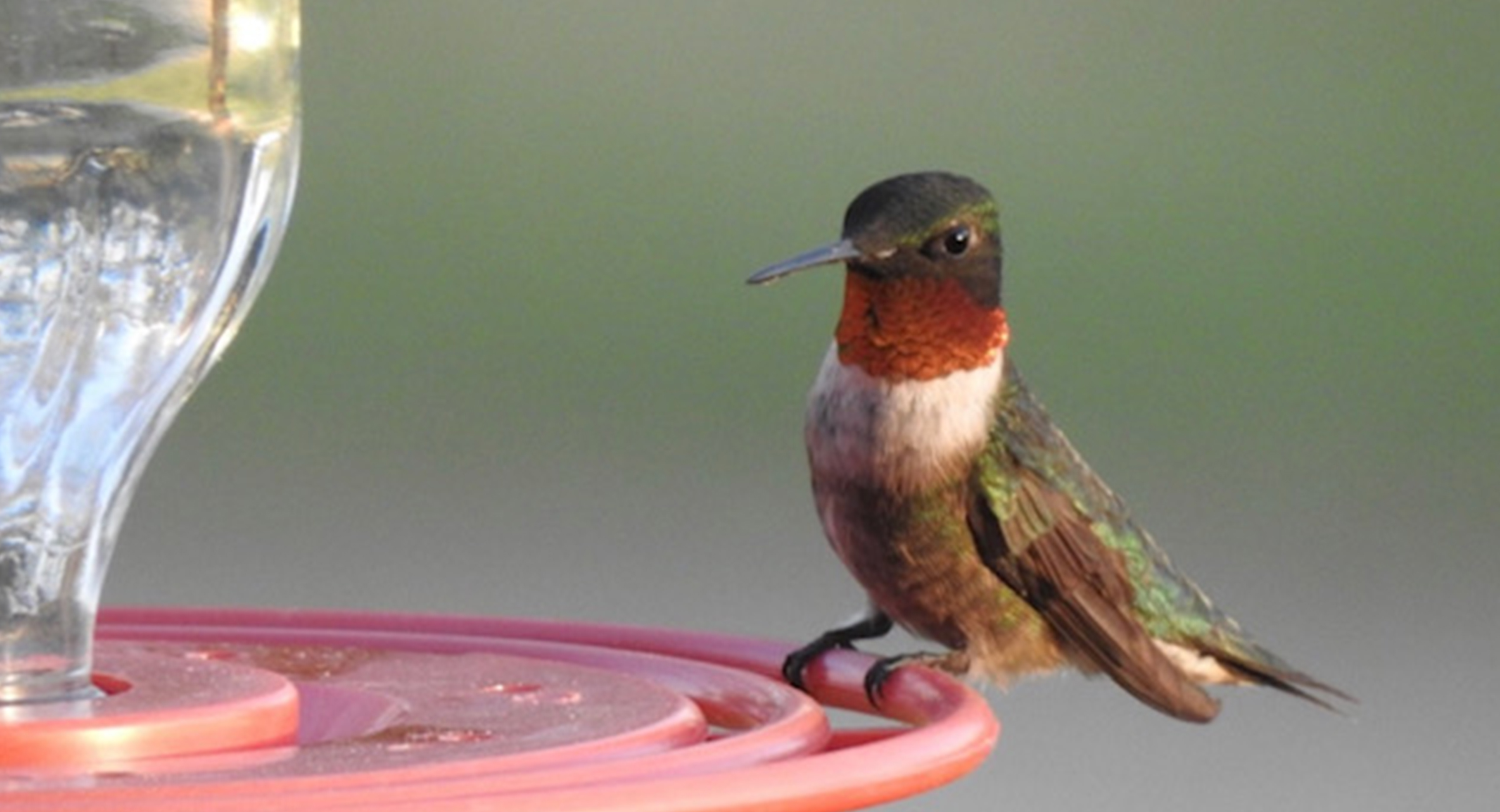
Feathered Friends
I enjoy feeding birds all year long but there is something about the summer season that makes me love it so much more. The beautiful colours of birds, having my windows open to hear those amazing songs, and just being able to sit outside and enjoy all of this is so inspiring. It’s a great way to be in touch with nature and to appreciate all it has to offer. One little gem, the ruby-throated hummingbird is a bird that just fascinates me and I truly consider it an honour to receive visits from this special bird. Sadly, because it is a popular bird to attract to feeders, many companies make feeders and foods that are inadequate and in some cases even inappropriate. Here are some tips for making sure you are doing the right thing for all of your backyard birds this summer.
We will start with the tiny ruby-throated hummingbird. These birds weigh in at two to six grams depending on the time of year, in fall they weigh their heaviest as they prepare for migration. Their wingspan is three to four inches and males are slightly smaller than females. It is truly unbelievable that this little bird flies all the way across the Gulf of Mexico to South America in fall and then back again in spring. What an amazing feat!

Hummingbirds are a very popular bird to attract to feeders and, sadly, the majority of nectar feeders sold are designed to be cute, not functional. Be sure to look for a feeder that is easy to clean as mold grows rapidly inside these feeders due to the sugar solution that is offered. Also, read the packaging to ensure it is leak-proof. Leaky feeders do a great job attracting ants, wasps, and hornets which deter hummingbirds. For your viewing pleasure, make sure the feeder has perches. Avoid overly decorative feeders, remember the decoration is the beautiful hummingbird itself!
As for nectar preparation, I cannot stress enough the importance of offering a proper solution. The best way is making it yourself. Boil water, measure out four cups, add one cup of white sugar and stir till dissolved. Never ever add anything else like food colouring, red soda, powdered drink mixes and use no other sweetener. Any of these are either directly harmful to hummingbirds or cause harm by rapid fermentation and mold. Pre-made liquid mixes have colouring and preservatives so do not use. You can leave your own solution in the fridge for up to two weeks and be sure to wash out the feeder and refill with fresh nectar every few days. The hotter it is outside the more frequently you will have to maintain it. This recipe and maintenance instructions also apply to oriole feeders. Orioles also eat grape jelly and oranges and there are special feeders designed to attract them.
Bird baths are a really fun item to have in the yard as they attract many species of birds including ones that do not come to feeders. Some people have issues with algae growing in birdbaths so use bleach or even baking soda and scrub it clean. Be sure to rinse it out well before refilling. Bird baths usually require a lot of maintenance especially in hot, dry periods.
Summer is the season of reproduction for wild birds and it is their main focus. Offering birdhouses will attract some species like wrens, chickadees, and nuthatches but most birds nest in shrubs and in trees or even on the ground. Birdhouses should be at least 15 feet away from birdfeeders.
These are just a few tips to get the most enjoyment out of your summer birding and to help you offer the best of everything to the birds. It is up to us to ensure that the products we offer wild birds are nothing but beneficial to them. In return, we are treated to some very interesting and beautiful birds to enjoy all throughout the season while making their lives a little easier.
Sherrie Versluis owns the Preferred Perch and is an avid birder.


I am very happy with the bird seed I have purchased at your store. Sunflower meats have brought many More Goldfinch to my yard this summer. This week I am trying theBulk garden friendly ,one day out and the Black capped Chickadees have already found them.
Had trouble with last bag I bought last year of Black sunflowers hardly any birds came to them(NOT from your store) I have now purchased a bag from your store and look forward to seeing much more birds this winter.
Thank you Sherri love your store. Wish I lived closer.